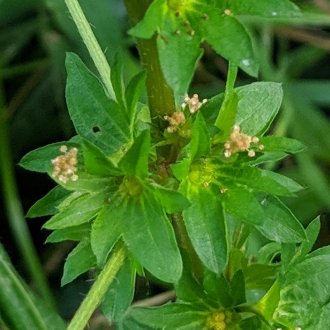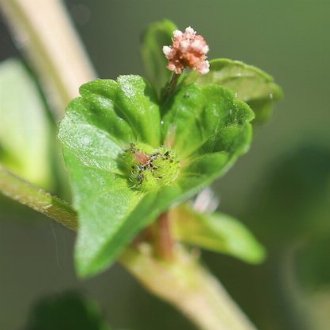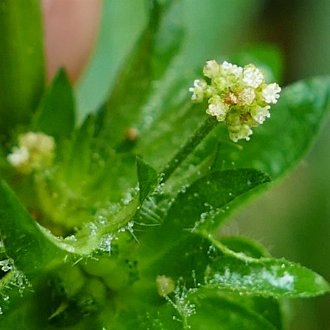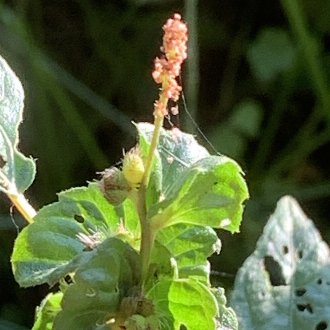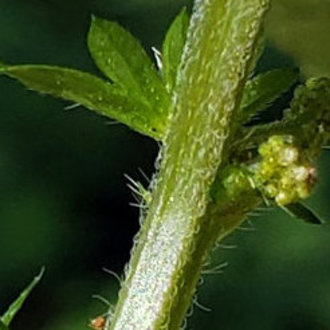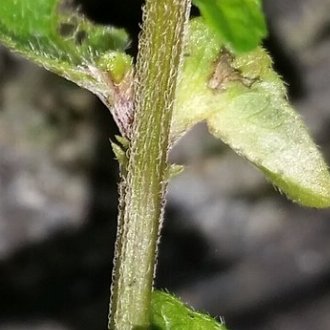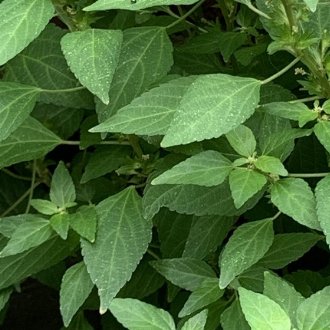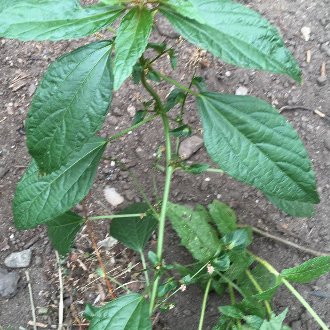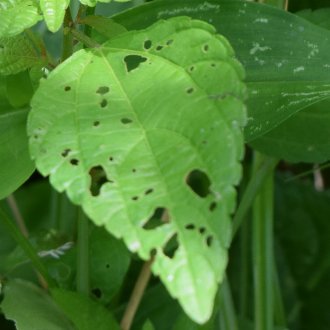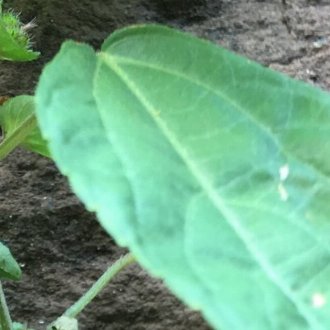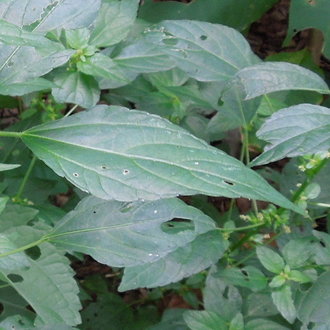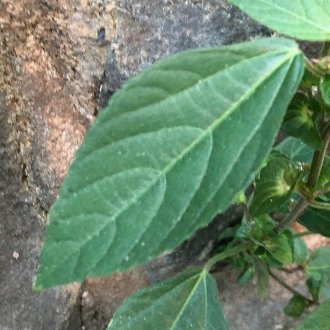Rhomboid Mercury vs Asian Copperleaf
These two species are superficially similar, can occur together in the same habitat, and can easily be confused, especially when people do not know to check againt the introduced A. australis. They are easily distinguished by their bracts and flowers, and also have subtle differences in leaves. A. australis currently has a restricted range, mostly in and around New York City, but temporary populations have cropped up in disparate locations including Oregon, Iowa, and Delaware, and due to the inconspicuous nature of this genus, it is probably undereported.
Rhomboid Mercury (Acalypha rhomboidea) | Asian Copperleaf (Acalypha australis) |
A common annual native to eastern to central North America, found in a range of habitats that have been disturbed in late spring to early summer. | An annual native to East Asia, this species has been widely introduced into Europe and has also expanded its range considerably in Asia. |
Bracts conspicuously lobed, with deep cuts between lobes (1/3–2/3 bract length). Usually has 7-9 lobes, rarely as few as 5 or as many as 11. Photo © John Abrams, CC BY 4.0. | Bracts are heart-shaped and appear almost unlobed, with only shallow teeth (roughly 1/20th the bract length) in place of deep cuts. 12-15 lobes, but lobes may be so subtle as to be difficult to count. Photo © Steven Bodzin, CC BY 4.0. |
Flower spikes much shorter. Stalk 0.1–0.6 cm, and staminate portion 0.3–1 cm, pistillate portion 0.7–1.5 cm (rarely to 2cm) Spikes only extend slightly beyond bracts. Photo © Wendy McCrady, CC BY 4.0. | Flower spikes average much longer. Stalk 0.5–4 cm (rarely to 6cm), and staminate portion of flower to 0.5–3 cm long. Spikes extend conspicuously beyond bracts, sometimes sticking far out from plant. Photo © Healthy Yards, CC BY 4.0. |
Stems sparsely pubescent. Hairs vary in stiffness, but are usually at least somewhat stiffer, and tend to stick out farther from the stem. Photo © aarongunnar, CC BY 4.0. | Stem covered in long, soft hairs that tend to stay pressed against the stem. Hairs range from dense to sparse. Photo © Zihao Wang, CC BY 4.0. |
Leaf blades average shorter relative to their width. Petioles may be longer (to 7cm) and on lower leaves are usually greater than half the length of the leaf blade. Photo © Sandy Wolkenberg, CC BY 4.0. | Leaf blades average longer relative to their width. Petioles are consistently shorter (to 4cm) and are often (not always) less than half the length of the leaf blade. Photo © Daniel Atha, Public Domain. |
Leaves never have heart-shaped bases, at the closest, occasionally being flat across at the base. Photo © , CC BY-SA 4.0. | Leaves occasionally may have heart-shaped bases. Photo © Daniel Atha, Public Domain. |
Leaf tips are more likely to taper to a point, and when they do, may taper to a longer point. Photo © , CC BY-SA 4.0. | Leaf tips, if they taper at all, taper to a shorter point, and may make a simple acute angle. Photo © Daniel Atha, Public Domain. |
Additional Notes
Unfortunately not enough is currently known about the habitat preferences of Acalypha australis in North America to know what the distinction in preferences between these two species are. If you have any knowledge or observations about differences in their habitat preferences, please contact us.References & External Resources
These short lists show only links helpful for ID. For a complete list of references and resources also covering other aspects of ecology, visit the links section of the full article on each plant, which is the first entry here.



